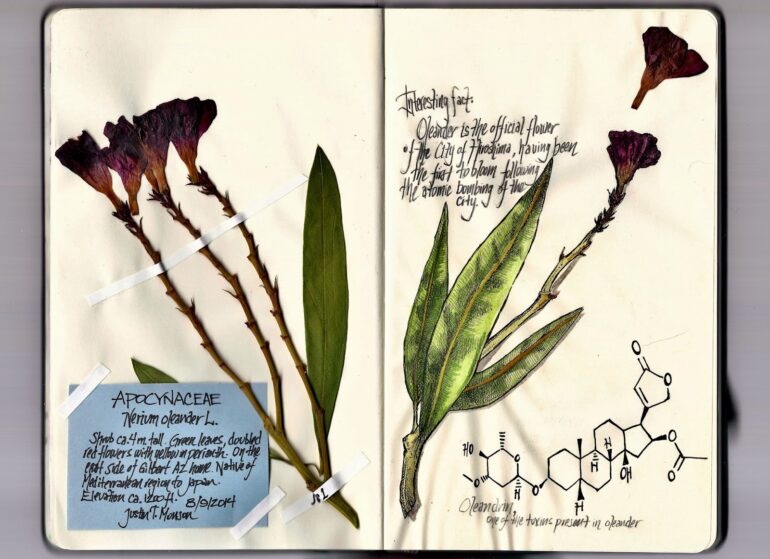TL;DR:
- UNSW and Botanic Gardens of Sydney utilize AI to analyze global herbarium collections.
- AI challenges conventional belief that leaf size increases in warmer climates within plant species.
- Herbaria digitization allows for efficient data access and machine learning applications.
- Gene flow within species may hinder the leaf size-climate relationship.
- AI’s role in documenting climate change effects and uncovering hidden trends.
Main AI News:
In a groundbreaking collaboration between scientists from the University of New South Wales (UNSW) and the Botanic Gardens of Sydney, artificial intelligence has been harnessed to unlock the vast troves of data stored within herbaria worldwide. Their mission? To explore and combat the far-reaching impacts of climate change on plant life.
“Herbarium collections are amazing time capsules of plant specimens,” asserts Associate Professor Will Cornwell, the lead author of this pioneering study. “Each year, over 8000 specimens are added to the National Herbarium of New South Wales alone, so it’s not possible to go through things manually anymore.”
Leveraging a novel machine learning algorithm, the research team scrutinized more than 3000 leaf samples, leading to a surprising revelation: contrary to commonly observed inter-species trends, leaf size does not necessarily increase in warmer climates within a single plant species.
Published in the esteemed American Journal of Botany, this research not only challenges conventional wisdom by highlighting factors beyond climate that influence leaf size within a plant species but also underscores how AI can swiftly and efficiently document the effects of climate change on static specimen collections.
Herbarium Collections Embrace the Digital Age
Herbaria, repositories of plant specimens dating back to the 16th century, have undergone a digital transformation in recent years. “The world is very digital now,” notes Cornwell, a researcher at the School of BEES and a member of UNSW Data Science Hub. “To disseminate information about these incredible specimens to scientists worldwide, there was an effort to scan them, producing high-resolution digital copies.”
The Botanic Gardens of Sydney spearheaded the largest herbarium imaging project, converting over 1 million plant specimens at the National Herbarium of New South Wales into high-resolution digital images. Dr. Jason Bragg, a researcher at the Botanic Gardens of Sydney, reached out to Cornwell shortly after this monumental digitization effort, aiming to integrate machine learning with these digital herbarium images.
“I was excited to work with Cornwell in developing models to detect leaves in the plant images and to study relationships between leaf size and climate using these extensive datasets,” Dr. Bragg explains.
Precision through Computer Vision
Together with Dr. Bragg and UNSW Honours student Brendan Wilde, Cornwell devised an algorithm capable of automating the detection and measurement of leaf sizes in scanned herbarium samples for two plant genera: Syzygium and Ficus. This AI, a convolutional neural network, effectively taught computers to identify and measure leaves, streamlining the processing and logging of specimen characteristics.
Breaking Established Patterns
In botanical circles, a long-standing rule of thumb posits that in wetter climates, such as tropical rainforests, plants tend to have larger leaves compared to those in drier climates like deserts. “That’s a very consistent pattern that we see in leaves between species all across the globe,” Cornwell affirms. The team’s initial goal was to ascertain if they could replicate this pattern using machine-learned data, and indeed, they could. However, their second inquiry delved deeper: with an abundance of data at their disposal, could the same pattern be discerned within a single plant species on a global scale?
The results of their investigation defied expectations. While the pattern was evident when comparing different plant species, it did not hold true within a single species across the world. This discrepancy is attributed to the influence of a distinct process known as gene flow within species, which weakens local-scale plant adaptation and likely hampers the development of the leaf size-climate relationship within species.
AI Paving the Way for Climate Predictions
The machine learning approach employed, while not infallible, provided sufficient accuracy to examine connections between leaf traits and climate. As Cornwell points out, “Because the world is changing quite fast, and there is so much data, these machine learning methods can effectively document the effects of climate change.” Furthermore, these algorithms can unearth trends that might elude human researchers, potentially leading to fresh insights into plant evolution, adaptations, and predictions regarding how plants will respond to future climate change.
Conclusion:
The application of AI to study plant-climate relationships through herbarium collections signifies a significant shift in botanical research. Contradicting established patterns and leveraging digitization, AI offers a fresh perspective on the impact of climate change on plant life. This development holds promising potential for the market as it unlocks new avenues for understanding and adapting to the evolving environmental landscape.

